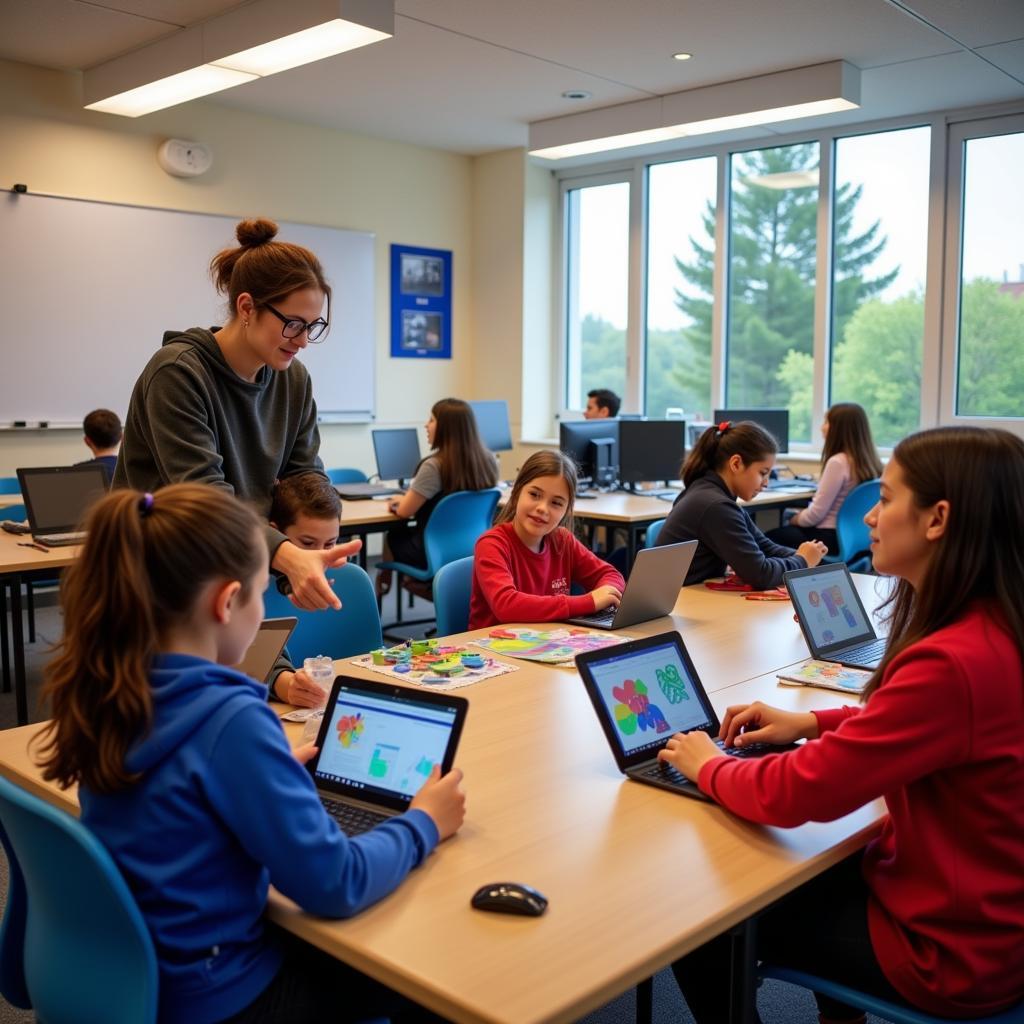Digital technology’s impact on children’s creativity is a recurring topic in IELTS Writing Task 2, appearing approximately 2-3 times annually. Based on past exam analysis, this theme frequently emerges in Agree/Disagree and Discussion type questions, particularly during the academic module tests.

Analysis of Recent Exam Topic
Some people believe that digital technology enhances children’s creativity, while others argue it hampers creative development. Discuss both views and give your opinion.
This question requires:
- Discussion of both positive and negative impacts
- Clear personal stance
- Relevant examples and supporting evidence
- Balanced analysis of both viewpoints
Band 8.5 Sample Essay
In the digital age, there is ongoing debate about whether technology nurtures or inhibits children’s creative abilities. While I acknowledge both perspectives, I believe that digital tools, when properly utilized, can significantly enhance creative development.
Digital technology can be a powerful catalyst for creativity. Modern software and applications provide children with diverse tools for artistic expression, from digital drawing to music composition, enabling them to experiment with various mediums without physical limitations. For instance, programs like Scratch teach children coding while allowing them to create interactive stories and games, fostering both technical skills and imaginative thinking. Additionally, online platforms facilitate collaborative creativity, enabling young people to share ideas and work on projects with peers globally.
However, critics raise valid concerns about technology’s potential drawbacks. Excessive screen time can reduce engagement in traditional creative activities like drawing, crafting, or outdoor play, which are crucial for developing tactile skills and spatial awareness. Furthermore, the instant gratification provided by digital devices may decrease children’s patience and persistence – essential qualities for creative problem-solving. For example, children might become reluctant to persist with challenging creative tasks when faced with initial difficulties.
In my view, the benefits of digital technology outweigh its drawbacks when properly managed. The key lies in achieving a balance between digital and traditional creative activities. Parents and educators should establish guidelines for technology use while ensuring children maintain engagement with conventional creative pursuits. This approach allows young people to harness digital tools’ advantages while developing fundamental creative skills through traditional methods.
(290 words)
Band 6.5 Sample Essay
Nowadays, many people have different opinions about digital technology’s effect on children’s creativity. I will discuss both sides and give my opinion about this topic.
On the positive side, digital technology gives children many new ways to be creative. They can use computers to draw pictures, make videos, and create music. Also, children can learn new things on the internet that help them think of new ideas. For example, my young cousin uses an iPad to make digital art and shares it with friends online.
However, some people think technology is bad for creativity. When children spend too much time on phones and computers, they don’t do other activities like playing outside or making things with their hands. Some children become lazy and just want to watch videos instead of making their own things. They might lose important skills like drawing with real pencils and paper.
In my opinion, I think digital technology can be good for children’s creativity if they use it correctly. Parents should control how much time children spend with technology and make sure they also do other creative activities. This way, children can get benefits from both digital and traditional ways of being creative.
(159 words)
Essay Analysis
Band 8.5 Essay Features:
- Sophisticated vocabulary and complex structures
- Clear organization with coherent paragraphs
- Well-developed arguments with specific examples
- Appropriate academic tone
- Balanced discussion with clear personal view
Band 6.5 Essay Features:
- Basic vocabulary with some repetition
- Simple sentence structures
- Limited development of ideas
- Informal tone at times
- Basic organization with some coherence
Key Vocabulary
- catalyst (n) /ˈkætəlɪst/ – something that causes activity between two or more persons or forces
- inhibit (v) /ɪnˈhɪbɪt/ – to prevent or slow down a process
- tactile (adj) /ˈtæktaɪl/ – related to the sense of touch
- spatial awareness (n) /ˈspeɪʃəl əˈweənəs/ – understanding of one’s position in space
- gratification (n) /ˌɡrætɪfɪˈkeɪʃən/ – satisfaction or pleasure
- persistence (n) /pəˈsɪstəns/ – continuing to do something despite difficulty
Conclusion
The impact of digital technology on children’s creativity remains a significant IELTS topic. Future questions might explore:
- The role of artificial intelligence in children’s creative development
- Balance between screen time and traditional creative activities
- Digital literacy’s influence on creative thinking
Practice writing your own essay on this topic and share it in the comments section for feedback and discussion.